236 papers:
 DATE-2015-MunchPHH #embedded #manycore #named #realtime #scalability #using
DATE-2015-MunchPHH #embedded #manycore #named #realtime #scalability #using- MPIOV: scaling hardware-based I/O virtualization for mixed-criticality embedded real-time systems using non transparent bridges to (multi-core) multi-processor systems (DM, MP, OH, AH), pp. 579–584.
 LATA-2015-LeonM #partial order #set
LATA-2015-LeonM #partial order #set- Building Bridges Between Sets of Partial Orders (HPdL, AM), pp. 145–160.
 CHI-2015-0001GH #challenge #design #framework #human-computer
CHI-2015-0001GH #challenge #design #framework #human-computer- Bridging the Theory-Practice Gap: Lessons and Challenges of Applying the Attachment Framework for Sustainable HCI Design (CR, SG, EMH), pp. 1305–1314.
 CHI-2015-HarboeH
CHI-2015-HarboeH- Real-World Affinity Diagramming Practices: Bridging the Paper-Digital Gap (GH, EMH), pp. 95–104.
 CHI-2015-MejovaBW #personalisation
CHI-2015-MejovaBW #personalisation- Bridges into the Unknown: Personalizing Connections to Little-known Countries (YM, JBH, IW), pp. 2633–2642.
 CHI-2015-MudliarR #gender #online
CHI-2015-MudliarR #gender #online- Offline Strangers, Online Friends: Bridging Classroom Gender Segregation with WhatsApp (PM, NR), pp. 3799–3808.
 CSCW-2015-Anya #design #exclamation #question #what
CSCW-2015-Anya #design #exclamation #question #what- Bridge the Gap!: What Can Work Design in Crowdwork Learn from Work Design Theories? (OA), pp. 612–627.
 CSCW-2015-MoghaddamNB #design #distributed #named
CSCW-2015-MoghaddamNB #design #distributed #named- Procid: Bridging Consensus Building Theory with the Practice of Distributed Design Discussions (RZM, ZN, BPB), pp. 686–699.
 HCI-UC-2015-GandyBLLMCS #concept
HCI-UC-2015-GandyBLLMCS #concept- Midtown Buzz: Bridging the Gap Between Concepts and Impact in a Civic Computing Initiative (MG, LDB, LML, AJL, EDM, RJC, MS), pp. 303–313.
 ICEIS-v2-2015-CruzMS15a #modelling #process #set
ICEIS-v2-2015-CruzMS15a #modelling #process #set- Bridging the Gap between a Set of Interrelated Business Process Models and Software Models (EFC, RJM, MYS), pp. 338–345.
 ICML-2015-SalimansKW #markov #monte carlo
ICML-2015-SalimansKW #markov #monte carlo- Markov Chain Monte Carlo and Variational Inference: Bridging the Gap (TS, DPK, MW), pp. 1218–1226.
 KDD-2015-RayanaA #bibliography #detection #metadata #network
KDD-2015-RayanaA #bibliography #detection #metadata #network- Collective Opinion Spam Detection: Bridging Review Networks and Metadata (SR, LA), pp. 985–994.
 SIGIR-2015-WangLWZZ #learning #named
SIGIR-2015-WangLWZZ #learning #named- LBMCH: Learning Bridging Mapping for Cross-modal Hashing (YW, XL, LW, WZ, QZ), pp. 999–1002.
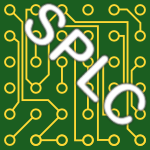 SPLC-2015-FerrariSGD #diagrams #documentation #feature model #natural language #tool support
SPLC-2015-FerrariSGD #diagrams #documentation #feature model #natural language #tool support- CMT and FDE: tools to bridge the gap between natural language documents and feature diagrams (AF, GOS, SG, FD), pp. 402–410.
 CADE-2015-ChocronFR #revisited
CADE-2015-ChocronFR #revisited- A Polite Non-Disjoint Combination Method: Theories with Bridging Functions Revisited (PC, PF, CR), pp. 419–433.
 DATE-2014-HeinigDHMWHGBKR #integration
DATE-2014-HeinigDHMWHGBKR #integration- System integration — The bridge between More than Moore and More Moore (AH, MD, AH, FM, TW, KH, AG, RB, SK, JR), pp. 1–9.
 VLDB-2014-ArenasDFKS #approach #graph
VLDB-2014-ArenasDFKS #approach #graph- A Principled Approach to Bridging the Gap between Graph Data and their Schemas (MA, GID, AF, AK, KS), pp. 601–612.
 CHI-2014-DalsgardD #concept #human-computer #research #theory and practice
CHI-2014-DalsgardD #concept #human-computer #research #theory and practice- Between theory and practice: bridging concepts in HCI research (PD, CD), pp. 1635–1644.
 CSCW-2014-BodenRSW #coordination
CSCW-2014-BodenRSW #coordination- Articulation spaces: bridging the gap between formal and informal coordination (AB, FR, GS, VW), pp. 1120–1130.
 DUXU-TMT-2014-Elias #game studies
DUXU-TMT-2014-Elias #game studies- The Bridge — A Transmedia Dialogue between TV, Film and Gaming (HE), pp. 548–559.
 DUXU-TMT-2014-SchmidtKGSGW #education
DUXU-TMT-2014-SchmidtKGSGW #education- Bridging the Gap — Methods and Teaching of F-A-S-T — Framing-Art-Science- Technology (DS, GK, SG, CS, RG, MW), pp. 589–600.
 DUXU-TMT-2014-ZellerGD #design
DUXU-TMT-2014-ZellerGD #design- basil.js — Bridging Mouse and Code Based Design Strategies (LZ, BG, TD), pp. 686–696.
 SCSM-2014-BeckmannG #social
SCSM-2014-BeckmannG #social- Social Computing — Bridging the Gap between the Social and the Technical (CB, TG), pp. 25–36.
 ICPR-2014-HafnerLUW #classification
ICPR-2014-HafnerLUW #classification- Bridging the Resolution Gap between Endoscope Types for a Colonic Polyp Classification (MH, ML, AU, GW), pp. 2739–2744.
 KEOD-2014-Lesot
KEOD-2014-Lesot- Bridging the Emotional Gap — From Objective Representations to Subjective Interpretations (MJL), pp. 1–15.
 KMIS-2014-Muthaiyah #implementation #information management #theory and practice
KMIS-2014-Muthaiyah #implementation #information management #theory and practice- Knowledge Management Technology Implementation — Bridging the Gap between Theory and Practice (SM), pp. 393–399.
 SIGIR-2014-CeroniTKN #using
SIGIR-2014-CeroniTKN #using- Bridging temporal context gaps using time-aware re-contextualization (AC, NKT, NK, CN), pp. 1127–1130.
 SIGIR-2014-VulicZM #e-commerce #formal method #learning
SIGIR-2014-VulicZM #e-commerce #formal method #learning- Learning to bridge colloquial and formal language applied to linking and search of E-Commerce data (IV, SZ, MFM), pp. 1195–1198.
 ECOOP-2014-ScherrC #staging
ECOOP-2014-ScherrC #staging- Implicit Staging of EDSL Expressions: A Bridge between Shallow and Deep Embedding (MS, SC), pp. 385–410.
 POPL-2014-ChaudhuriCS #proving #synthesis #using
POPL-2014-ChaudhuriCS #proving #synthesis #using- Bridging boolean and quantitative synthesis using smoothed proof search (SC, MC, ASL), pp. 207–220.
 SLE-J-2012-GuizzardiZ #concept #modelling #ontology #using
SLE-J-2012-GuizzardiZ #concept #modelling #ontology #using- Using a trope-based foundational ontology for bridging different areas of concern in ontology-driven conceptual modeling (GG, VZ), pp. 417–443.
 CASE-2013-ChoJKMKC
CASE-2013-ChoJKMKC- Caterpillar-based cable climbing robot for inspection of suspension bridge hanger rope (KHC, YHJ, HMK, HM, JK, HRC), pp. 1059–1062.
 CASE-2013-LaLBGYMRP #evaluation
CASE-2013-LaLBGYMRP #evaluation- Autonomous robotic system for high-efficiency non-destructive bridge deck inspection and evaluation (HML, RSL, BB, NG, JY, AM, FAR, HP), pp. 1053–1058.
 CASE-2013-LiuTYG #modelling
CASE-2013-LiuTYG #modelling- Modeling of pure percussive drilling for autonomous robotic bridge decks rehabilitation (FL, MT, JY, NG), pp. 1063–1068.
 CASE-2013-SehestedtPRL #3d #maintenance #performance
CASE-2013-SehestedtPRL #3d #maintenance #performance- Prior-knowledge assisted fast 3D map building of structured environments for steel bridge maintenance (SS, GP, DRS, DL), pp. 1040–1046.
 DATE-2013-GoultiaevaSB
DATE-2013-GoultiaevaSB- Bridging the gap between dual propagation and CNF-based QBF solving (AG, MS, AB), pp. 811–814.
 SIGMOD-2013-ZhuMXLTZ #distance #network #query #theory and practice #towards
SIGMOD-2013-ZhuMXLTZ #distance #network #query #theory and practice #towards- Shortest path and distance queries on road networks: towards bridging theory and practice (ADZ, HM, XX, SL, YT, SZ), pp. 857–868.
 CSEET-2013-NgH #education #framework #industrial #named #re-engineering
CSEET-2013-NgH #education #framework #industrial #named #re-engineering- Essence: A framework to help bridge the gap between software engineering education and industry needs (PWN, SH), pp. 304–308.
 CHI-2013-CoughlanPM #collaboration #education #reuse
CHI-2013-CoughlanPM #collaboration #education #reuse- Building open bridges: collaborative remixing and reuse of open educational resources across organisations (TC, RP, PM), pp. 991–1000.
 CHI-2013-PriorWBK #agile #development
CHI-2013-PriorWBK #agile #development- Use of an agile bridge in the development of assistive technology (SP, AW, RB, TK), pp. 1579–1588.
 CHI-2013-VermeulenLHC #execution
CHI-2013-VermeulenLHC #execution- Crossing the bridge over norman’s gulf of execution: revealing feedforward’s true identity (JV, KL, EvdH, KC), pp. 1931–1940.
 DUXU-CXC-2013-ThianthaiZ #enterprise #gamification
DUXU-CXC-2013-ThianthaiZ #enterprise #gamification- Bridging the Gap between Consumer and Enterprise Applications through Gamification (TT, BZ), pp. 602–607.
 ICEIS-J-2013-GandonBCCFGTMSTV #challenge #semantics #social #web
ICEIS-J-2013-GandonBCCFGTMSTV #challenge #semantics #social #web- Challenges in Bridging Social Semantics and Formal Semantics on the Web (FG, MB, EC, OC, CFZ, AG, NLT, IM, PS, AT, SV), pp. 3–15.
 ICEIS-v1-2013-PiazzaR #implementation #modelling #multi #problem
ICEIS-v1-2013-PiazzaR #implementation #modelling #multi #problem- Bridging the Gap between Multidimensional Business Problem Formulation and the Implementation of Multidimensional Data Models (FP, FR), pp. 79–87.
 MLDM-2013-ZhaiHOHH #concept
MLDM-2013-ZhaiHOHH #concept- Shifting Concepts to Their Associative Concepts via Bridges (HZ, MH, YO, KH, SH), pp. 586–600.
 ICSE-2013-ZhangH0RM #testing
ICSE-2013-ZhangH0RM #testing- Bridging the gap between the total and additional test-case prioritization strategies (LZ, DH, LZ, GR, HM), pp. 192–201.
 SPLC-2013-DumitrescuMSD #experience #modelling #product line #variability
SPLC-2013-DumitrescuMSD #experience #modelling #product line #variability- Bridging the gap between product lines and systems engineering: an experience in variability management for automotive model based systems engineering (CD, RM, CS, AD), pp. 254–263.
 HPCA-2013-NereHLT #behaviour #biology #semantic gap
HPCA-2013-NereHLT #behaviour #biology #semantic gap- Bridging the semantic gap: Emulating biological neuronal behaviors with simple digital neurons (AN, AH, MHL, GT), pp. 472–483.
 CASE-2012-KimCJLKC #development #maintenance
CASE-2012-KimCJLKC #development #maintenance- Development of cable climbing robot for maintenance of suspension bridges (HMK, KHC, YHJ, FL, JK, HRC), pp. 606–611.
 CSMR-2012-Varro #maintenance #model transformation
CSMR-2012-Varro #maintenance #model transformation- Keynote 2: A Bridge Over Troubled Water — Synergies between Model Transformation and Software Maintenance Techniques (DV), pp. 5–6.
 ICGT-2012-GolasLEG #flexibility #formal method #graph grammar #towards
ICGT-2012-GolasLEG #flexibility #formal method #graph grammar #towards- Toward Bridging the Gap between Formal Foundations and Current Practice for Triple Graph Grammars — Flexible Relations between Source and Target Elements (UG, LL, HE, HG), pp. 141–155.
 CHI-2012-BaoHCQHG #named #wiki
CHI-2012-BaoHCQHG #named #wiki- Omnipedia: bridging the wikipedia language gap (PB, BH, SC, MQ, MSH, DG), pp. 1075–1084.
 CHI-2012-VoidaHA #coordination #social #volunteer
CHI-2012-VoidaHA #coordination #social #volunteer- Bridging between organizations and the public: volunteer coordinators’ uneasy relationship with social computing (AV, EH, BAA), pp. 1967–1976.
 CSCW-2012-EletaG #case study #image #multi #social
CSCW-2012-EletaG #case study #image #multi #social- A study of multilingual social tagging of art images: cultural bridges and diversity (IE, JG), pp. 695–704.
 CIKM-2012-Gomez-RodriguezR #graph #online #social
CIKM-2012-Gomez-RodriguezR #graph #online #social- Bridging offline and online social graph dynamics (MGR, MR), pp. 2447–2450.
 SEKE-2012-DeltombeGB #legacy #modelling
SEKE-2012-DeltombeGB #legacy #modelling- Bridging KDM and ASTM for Model-Driven Software Modernization (GD, OLG, FB), pp. 517–524.
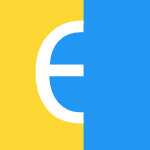 ECMFA-2012-YueA #case study #industrial #non-functional #requirements #state machine #testing
ECMFA-2012-YueA #case study #industrial #non-functional #requirements #state machine #testing- Bridging the Gap between Requirements and Aspect State Machines to Support Non-functional Testing: Industrial Case Studies (TY, SA), pp. 133–145.
 SAC-2012-ZhaoLCSS #information management #modelling #process #question
SAC-2012-ZhaoLCSS #information management #modelling #process #question- Can business process modeling bridge the gap between business and information systems? (LZ, KL, EVC, SdFMS, PS), pp. 1723–1724.
 ICSE-2012-Shang #developer #using
ICSE-2012-Shang #developer #using- Bridging the divide between software developers and operators using logs (WS), pp. 1583–1586.
 SLE-2012-CombemaleHJBB #execution #metamodelling #modelling
SLE-2012-CombemaleHJBB #execution #metamodelling #modelling- Bridging the Chasm between Executable Metamodeling and Models of Computation (BC, CH, CJ, FB, BB), pp. 184–203.
 SLE-2012-GuizzardiZ #concept #modelling
SLE-2012-GuizzardiZ #concept #modelling- A Common Foundational Theory for Bridging Two Levels in Ontology-Driven Conceptual Modeling (GG, VZ), pp. 286–310.
 HPDC-2012-XiaCLTDB #named #network #performance
HPDC-2012-XiaCLTDB #named #network #performance- VNET/P: bridging the cloud and high performance computing through fast overlay networking (LX, ZC, JRL, YT, PAD, PGB), pp. 259–270.
 TAP-2012-ArmandoPCMB #automation #model checking #protocol #security #testing
TAP-2012-ArmandoPCMB #automation #model checking #protocol #security #testing- From Model-Checking to Automated Testing of Security Protocols: Bridging the Gap (AA, GP, RC, AM, DB), pp. 3–18.
 DATE-2011-NejadMG #quality
DATE-2011-NejadMG #quality- An FPGA bridge preserving traffic quality of service for on-chip network-based systems (ABN, MEM, KG), pp. 425–430.
 HT-2011-DaiQD #query #web
HT-2011-DaiQD #query #web- Bridging link and query intent to enhance web search (ND, XQ, BDD), pp. 17–26.
 VLDB-2011-GrosseLWFL #in memory
VLDB-2011-GrosseLWFL #in memory- Bridging Two Worlds with RICE Integrating R into the SAP In-Memory Computing Engine (PG, WL, TW, FF, WSL), pp. 1307–1317.
 CHI-2011-HartmannDC #named #web
CHI-2011-HartmannDC #named #web- HyperSource: bridging the gap between source and code-related web sites (BH, MD, MKC), pp. 2207–2210.
 CHI-2011-RaderEC
CHI-2011-RaderEC- Brick by brick: iterating interventions to bridge the achievement gap with virtual peers (ER, ME, JC), pp. 2971–2974.
 HCD-2011-LinC #research #social #social media
HCD-2011-LinC #research #social #social media- Bridging the Social Media Usage Gap from Old to New: An Elderly Media Interpersonal and Social Research in Taiwan (SHL, WHC), pp. 547–555.
 OCSC-2011-TsaiHT #network #social
OCSC-2011-TsaiHT #network #social- An Investigation into the Social Network between Three Generations in a Household: Bridging the Interrogational Gaps between the Senior and the Youth (THT, YLH, KCT), pp. 277–286.
 AdaEurope-2011-Rodriguez-LopezG #abstraction #architecture #middleware #paradigm
AdaEurope-2011-Rodriguez-LopezG #abstraction #architecture #middleware #paradigm- Architecting a Common Bridge Abstraction over Different Middleware Paradigms (IRL, MGV), pp. 132–146.
 CAiSE-2011-MoosaviLLP #collaboration #named
CAiSE-2011-MoosaviLLP #collaboration #named- ONTECTAS: Bridging the Gap between Collaborative Tagging Systems and Structured Data (AM, TL, LVSL, RP), pp. 436–451.
 ICEIS-J-2011-MeisenMSJ11a #adaptation #integration #semantic gap #simulation
ICEIS-J-2011-MeisenMSJ11a #adaptation #integration #semantic gap #simulation- Adaptive Information Integration: Bridging the Semantic Gap between Numerical Simulations (TM, PM, DS, SJ), pp. 51–65.
 CIKM-2011-MomtaziK #retrieval
CIKM-2011-MomtaziK #retrieval- Trained trigger language model for sentence retrieval in QA: bridging the vocabulary gap (SM, DK), pp. 2005–2008.
 KMIS-2011-MendesR11a #development #ontology #semantics
KMIS-2011-MendesR11a #development #ontology #semantics- The BRIDG Model as the Most Authoritative Resource in Shared Semantics for Ontologies Development in Healthcare Practice (DM, IPR), pp. 379–383.
 MLDM-2011-SahaDR #community #detection #network
MLDM-2011-SahaDR #community #detection #network- Detection of Communities and Bridges in Weighted Networks (TS, CD, HR), pp. 584–598.
 MoDELS-2011-ClavreulMBF #architecture #behaviour #modelling
MoDELS-2011-ClavreulMBF #architecture #behaviour #modelling- Service-Oriented Architecture Modeling: Bridging the Gap between Structure and Behavior (MC, SM, MBF, RBF), pp. 289–303.
 MoDELS-2011-FlochYGDCRF #compilation #modelling #optimisation #question
MoDELS-2011-FlochYGDCRF #compilation #modelling #optimisation #question- Model-Driven Engineering and Optimizing Compilers: A Bridge Too Far? (AF, TY, CG, SD, BC, SVR, RBF), pp. 608–622.
 MoDELS-2011-ClavreulMBF #architecture #behaviour #modelling
MoDELS-2011-ClavreulMBF #architecture #behaviour #modelling- Service-Oriented Architecture Modeling: Bridging the Gap between Structure and Behavior (MC, SM, MBF, RBF), pp. 289–303.
 MoDELS-2011-FlochYGDCRF #compilation #modelling #optimisation #question
MoDELS-2011-FlochYGDCRF #compilation #modelling #optimisation #question- Model-Driven Engineering and Optimizing Compilers: A Bridge Too Far? (AF, TY, CG, SD, BC, SVR, RBF), pp. 608–622.
 SAC-2011-EbraertSJ #design #diagrams #feature model #implementation
SAC-2011-EbraertSJ #design #diagrams #feature model #implementation- Change-based FODA diagrams: bridging the gap between feature-oriented design and implementation (PE, QDS, DJ), pp. 1345–1352.
 SAC-2011-SchallSPD #community
SAC-2011-SchallSPD #community- Bridging socially-enhanced virtual communities (DS, FS, HP, SD), pp. 792–799.
 SPLC-2011-DhunganaSBRGBG #modelling #multi #product line #variability
SPLC-2011-DhunganaSBRGBG #modelling #multi #product line #variability- Configuration of Multi Product Lines by Bridging Heterogeneous Variability Modeling Approaches (DD, DS, GB, RR, PG, DB, JAG), pp. 120–129.
 CBSE-2010-SuryadevaraKSP #embedded #modelling #semantic gap
CBSE-2010-SuryadevaraKSP #embedded #modelling #semantic gap- Bridging the Semantic Gap between Abstract Models of Embedded Systems (JS, EYK, CCS, PP), pp. 55–73.
 DAC-2010-NahirZGHACBFBK #validation #verification
DAC-2010-NahirZGHACBFBK #validation #verification- Bridging pre-silicon verification and post-silicon validation (AN, AZ, RG, AJH, MA, AC, BB, HF, VB, SK), pp. 94–95.
 DocEng-2010-QuintRSV #editing
DocEng-2010-QuintRSV #editing- From templates to schemas: bridging the gap between free editing and safe data processing (VQ, CR, SS, CV), pp. 61–64.
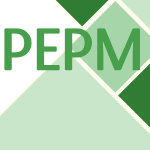 PEPM-2010-MossP #implementation #performance
PEPM-2010-MossP #implementation #performance- Bridging the gap between symbolic and efficient AES implementations (AM, DP), pp. 101–110.
 ICPR-2010-SunVFT #automation #detection
ICPR-2010-SunVFT #automation #detection- Automated Detection of Nucleoplasmic Bridges for DNA Damage Scoring in Binucleated Cells (CS, PV, MF, PT), pp. 2480–2483.
 ECMFA-2010-BruneliereCCJB #eclipse #modelling #tool support #towards
ECMFA-2010-BruneliereCCJB #eclipse #modelling #tool support #towards- Towards Model Driven Tool Interoperability: Bridging Eclipse and Microsoft Modeling Tools (HB, JC, CC, FJ, JB), pp. 32–47.
 RE-2010-LockerbieBMBE #analysis #concept #modelling #simulation #using
RE-2010-LockerbieBMBE #analysis #concept #modelling #simulation #using- Using i* Modelling as a Bridge between Air Traffic Management Operational Concepts and Agent-based Simulation Analysis (JL, DB, NAMM, HAPB, MHCE), pp. 351–356.
 ICSE-2010-BudnikCK #automation #testing #theory and practice
ICSE-2010-BudnikCK #automation #testing #theory and practice- Bridging the Gap Between the Theory and Practice of Software Test Automation (CJB, WKC, GMK), pp. 445–446.
 ICSE-2010-ErfurthR #aspect-oriented #named #requirements #uml
ICSE-2010-ErfurthR #aspect-oriented #named #requirements #uml- CUTA4UML: bridging the gap between informal and formal requirements for dynamic system aspects (IE, WR), pp. 171–174.
 ICSE-2010-TreudeS10a #category theory #lightweight
ICSE-2010-TreudeS10a #category theory #lightweight- Bridging lightweight and heavyweight task organization: the role of tags in adopting new task categories (CT, MADS), pp. 231–234.
 DATE-2009-GraciaMVBV #latency
DATE-2009-GraciaMVBV #latency- Light NUCA: A proposal for bridging the inter-cache latency gap (DSG, TM, FV, RB, VV), pp. 530–535.
 DATE-2009-KhursheedAH #design #fault #multi #reduction
DATE-2009-KhursheedAH #design #fault #multi #reduction- Test cost reduction for multiple-voltage designs with bridge defects through Gate-Sizing (SSK, BMAH, PH), pp. 1349–1354.
 DATE-2009-XuVJ #runtime
DATE-2009-XuVJ #runtime- Selective light Vth hopping (SLITH): Bridging the gap between runtime dynamic and leakage (HX, RV, WBJ), pp. 594–597.
 HT-2009-CarmagnolaLB #facebook #network #similarity #social
HT-2009-CarmagnolaLB #facebook #network #similarity #social- Vcast on facebook: bridging social and similarity networks (FC, AL, GB), pp. 329–330.
 SIGMOD-2009-ChaudhuriNS #profiling #static analysis #using
SIGMOD-2009-ChaudhuriNS #profiling #static analysis #using- Bridging the application and DBMS divide using static analysis and dynamic profiling (SC, VRN, MS), pp. 1039–1042.
 VLDB-2009-ArenasPRR #theory and practice
VLDB-2009-ArenasPRR #theory and practice- Inverting Schema Mappings: Bridging the Gap between Theory and Practice (MA, JP, JLR, CR), pp. 1018–1029.
 ITiCSE-2009-BrindaPS #education #standard
ITiCSE-2009-BrindaPS #education #standard- Bridging ICT and CS: educational standards for computer science in lower secondary education (TB, HP, CS), pp. 288–292.
 TACAS-2009-Miller #development #model checking #modelling
TACAS-2009-Miller #development #model checking #modelling- Bridging the Gap Between Model-Based Development and Model Checking (SPM), pp. 443–453.
 CHI-2009-WeissWJJKHB #physics
CHI-2009-WeissWJJKHB #physics- SLAP widgets: bridging the gap between virtual and physical controls on tabletops (MW, JW, YJ, RJ, RK, JDH, JOB), pp. 481–490.
 DHM-2009-BruggemannS #design
DHM-2009-BruggemannS #design- Nautical PSI — Virtual Nautical Officers as Test Drivers in Ship Bridge Design (UB, SS), pp. 355–364.
 DHM-2009-RobbinsCM #architecture #human-computer #modelling
DHM-2009-RobbinsCM #architecture #human-computer #modelling- Bridging the Gap between HCI and DHM: The Modeling of Spatial Awareness within a Cognitive Architecture (BR, DWC, AM), pp. 295–304.
 HCD-2009-MerlinHR #concept #evolution #multi
HCD-2009-MerlinHR #concept #evolution #multi- Bridging Software Evolution’s Gap: The Multilayer Concept (BM, CH, MR), pp. 266–275.
 SIGAda-2009-LiangRS #architecture #automation #generative #prototype
SIGAda-2009-LiangRS #architecture #automation #generative #prototype- “Automatic Prototype Generating” restated with re-ADA: perspective-bridged architecture for document-driven systems transitioning (SXL, LAR, SS), pp. 45–60.
 CIKM-2009-WangZZ09a #information management #network
CIKM-2009-WangZZ09a #information management #network- Bridging the gap: complex networks meet information and knowledge management (JW, SZ, DZ), pp. 2113–2114.
 SEKE-2009-BifflSM #automation #ontology #semantic gap
SEKE-2009-BifflSM #automation #ontology #semantic gap- Bridging Semantic Gaps Between Stakeholders in the Production Automation Domain with Ontology Areas (SB, WDS, TM), pp. 233–239.
 GPCE-2009-Nikhil #design #hardware #using
GPCE-2009-Nikhil #design #hardware #using- Using GPCE principles for hardware systems and accelerators: (bridging the gap to HW design) (RSN), pp. 1–2.
 RE-2009-HeiskariKRM #requirements #usability
RE-2009-HeiskariKRM #requirements #usability- Bridging the Gap Between Usability and Requirements Engineering (JH, MK, MR, TM), pp. 303–308.
 ICSE-2009-TreudeS #aspect-oriented #development #how #social
ICSE-2009-TreudeS #aspect-oriented #development #how #social- How tagging helps bridge the gap between social and technical aspects in software development (CT, MADS), pp. 12–22.
 HPCA-2009-FanKDM #programmable
HPCA-2009-FanKDM #programmable- Bridging the computation gap between programmable processors and hardwired accelerators (KF, MK, GSD, SAM), pp. 313–322.
 CADE-2009-Sofronie-Stokkermans #locality
CADE-2009-Sofronie-Stokkermans #locality- Locality Results for Certain Extensions of Theories with Bridging Functions (VSS), pp. 67–83.
 ASE-2008-RuengmeeFBRL #aspect-oriented #editing #programming #usability
ASE-2008-RuengmeeFBRL #aspect-oriented #editing #programming #usability- XE (eXtreme Editor) — Bridging the Aspect-Oriented Programming Usability Gap (WR, RSSF, SKB, DFR, CVL), pp. 435–438.
 CASE-2008-WangSF #automation #detection #difference #equation
CASE-2008-WangSF #automation #detection #difference #equation- Partial differential equation-based GPR signature discrimination for automatic detection of bridge deck delamination (ZWW, GGS, TF), pp. 431–435.
 DATE-2008-DAscoliBMFRPVFM #programmable
DATE-2008-DAscoliBMFRPVFM #programmable- A Programmable and Low-EMI Integrated Half-Bridge Driver in BCD Technology (FD, LB, MM, LF, GR, EP, FV, MF, MDM), pp. 879–884.
 DATE-2008-EngelkePSB #fault #industrial #simulation
DATE-2008-EngelkePSB #fault #industrial #simulation- Resistive Bridging Fault Simulation of Industrial Circuits (PE, IP, JS, BB), pp. 628–633.
 DATE-2008-PomeranzR #detection #fault #logic
DATE-2008-PomeranzR #detection #fault #logic- A Bridging Fault Model Where Undetectable Faults Imply Logic Redundancy (IP, SMR), pp. 1166–1171.
 DATE-2008-TenentesKK #testing
DATE-2008-TenentesKK #testing- State Skip LFSRs: Bridging the Gap between Test Data Compression and Test Set Embedding for IP Cores (VT, XK, EK), pp. 474–479.
 SEFM-2008-LaneseGMZ
SEFM-2008-LaneseGMZ- Bridging the Gap between Interaction- and Process-Oriented Choreographies (IL, CG, FM, GZ), pp. 323–332.
 ICEIS-ISAS2-2008-Kumlander #development #nondeterminism
ICEIS-ISAS2-2008-Kumlander #development #nondeterminism- Bridging Uncertainties Gaps in Software Development Projects (DK), pp. 240–245.
 KDD-2008-HwangKRZ #graph #mining
KDD-2008-HwangKRZ #graph #mining- Bridging centrality: graph mining from element level to group level (WH, TK, MR, AZ), pp. 336–344.
 SEKE-2008-ScheithauerWT #documentation #execution #process #semantic gap
SEKE-2008-ScheithauerWT #documentation #execution #process #semantic gap- Bridging the Semantic Gap Between Process Documentation and Process Execution (GS, GW, CT), pp. 549–554.
 SEKE-2008-Wotawa #modelling #slicing
SEKE-2008-Wotawa #modelling #slicing- Bridging the Gap Between Slicing and Model-based Diagnosis (FW), pp. 836–841.
 SIGIR-2008-HoonKTK #named #query
SIGIR-2008-HoonKTK #named #query- Minexml: bridging unstructured query with structured resources via mediated query (GKH, PKK, SST, TEK), p. 879.
 SIGIR-2008-XueDYY #classification #topic
SIGIR-2008-XueDYY #classification #topic- Topic-bridged PLSA for cross-domain text classification (GRX, WD, QY, YY), pp. 627–634.
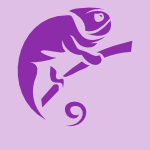 ICMT-2008-AmstelBPV #algebra #modelling #process #question #semantic gap #state machine #uml
ICMT-2008-AmstelBPV #algebra #modelling #process #question #semantic gap #state machine #uml- Transforming Process Algebra Models into UML State Machines: Bridging a Semantic Gap? (MvA, MvdB, ZP, TV), pp. 61–75.
 SLE-2008-Nilsson-NymanEH #semiparsing #using
SLE-2008-Nilsson-NymanEH #semiparsing #using- Practical Scope Recovery Using Bridge Parsing (ENN, TE, GH), pp. 95–113.
 HPCA-2008-LinLDZZS #clustering #manycore #simulation
HPCA-2008-LinLDZZS #clustering #manycore #simulation- Gaining insights into multicore cache partitioning: Bridging the gap between simulation and real systems (JL, QL, XD, ZZ, XZ, PS), pp. 367–378.
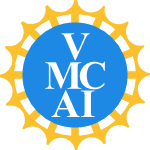 VMCAI-2008-Goldberg #on the #simulation #verification
VMCAI-2008-Goldberg #on the #simulation #verification- On Bridging Simulation and Formal Verification (EG), pp. 127–141.
 SIGMOD-2007-MelnikAB #compilation #database
SIGMOD-2007-MelnikAB #compilation #database- Compiling mappings to bridge applications and databases (SM, AA, PAB), pp. 461–472.
 VLDB-2007-ChaudhuriNS #database #developer #profiling
VLDB-2007-ChaudhuriNS #database #developer #profiling- Bridging the Application and DBMS Profiling Divide for Database Application Developers (SC, VRN, MS), pp. 1252–1262.
 DHM-2007-Feyen #interactive #modelling
DHM-2007-Feyen #interactive #modelling- Bridging the Gap: Exploring Interactions Between Digital Human Models and Cognitive Models (RF), pp. 382–391.
 HCI-IDU-2007-ChenA #comprehension #design
HCI-IDU-2007-ChenA #comprehension #design- Context-Centered Design: Bridging the Gap Between Understanding and Designing (YC, MEA), pp. 40–48.
 SIGIR-2007-LalmasBFFJ #community #comprehension #information management
SIGIR-2007-LalmasBFFJ #community #comprehension #information management- Bridging the digital divide: understanding information access practices in an indian village community (ML, RB, MF, DMF, MJ), pp. 741–742.
 DAC-2006-GoraiBBTM #protocol #verification
DAC-2006-GoraiBBTM #protocol #verification- Directed-simulation assisted formal verification of serial protocol and bridge (SG, SB, LB, PT, RSM), pp. 731–736.
 DATE-2006-PomeranzR #detection #fault #generative #testing
DATE-2006-PomeranzR #detection #fault #generative #testing- Generation of broadside transition fault test sets that detect four-way bridging faults (IP, SMR), pp. 907–912.
 SIGMOD-2006-Cohen #theory and practice
SIGMOD-2006-Cohen #theory and practice- User-defined aggregate functions: bridging theory and practice (SC), pp. 49–60.
 VLDB-2006-ChenLSDC #database #image #named #query #scalability #semantic gap
VLDB-2006-ChenLSDC #database #image #named #query #scalability #semantic gap- HISA: A Query System Bridging The Semantic Gap For Large Image Databases (GC, XL, LS, JD, CC), pp. 1187–1190.
 CHI-2006-DrennerHFRT #web
CHI-2006-DrennerHFRT #web- Insert movie reference here: a system to bridge conversation and item-oriented web sites (SD, FMH, DF, JR, LGT), pp. 951–954.
 EDOC-2006-ShafiqDF #multi #semantics #towards #web #web service
EDOC-2006-ShafiqDF #multi #semantics #towards #web #web service- Bridging Multi Agent Systems and Web Services: towards interoperability between Software Agents and Semantic Web Services (MOS, YD, DF), pp. 85–96.
 EDOC-2006-ZahaDHBD #interactive #modelling
EDOC-2006-ZahaDHBD #interactive #modelling- Service Interaction Modeling: Bridging Global and Local Views (JMZ, MD, AHMtH, APB, GD), pp. 45–55.
 ICEIS-ISAS-2006-ShishkovDL
ICEIS-ISAS-2006-ShishkovDL- Bridging the Language-Action Perspective and Organizational Semiotics in SDBC (BS, JLGD, KL), pp. 52–60.
 KDD-2006-ZhangCWZ #clustering #concept #identification
KDD-2006-ZhangCWZ #clustering #concept #identification- Identifying bridging rules between conceptual clusters (SZ, FC, XW, CZ), pp. 815–820.
 SIGIR-2006-ShenSYC #classification #query #web
SIGIR-2006-ShenSYC #classification #query #web- Building bridges for web query classification (DS, JTS, QY, ZC), pp. 131–138.
 ICSE-2006-ThompsonE #education #industrial #re-engineering
ICSE-2006-ThompsonE #education #industrial #re-engineering- Third international summit on software engineering education (SSEE III): bridging the university/industry gap (JBT, HME), pp. 1011–1012.
 CGO-2006-ChenGSUWZLZ #execution #framework #java
CGO-2006-ChenGSUWZLZ #execution #framework #java- Java JNI Bridge: A Framework for Mixed Native ISA Execution (MC, SG, SS, VU, YW, QZ, EL, YZ), pp. 65–75.
 WICSA-2005-Riva #architecture #logic #re-engineering
WICSA-2005-Riva #architecture #logic #re-engineering- Bridging the Concrete and Logical Domains for Software Architecture Reconstruction (CR), pp. 263–264.
 DAC-2005-BacchiniMDMPSEU #named
DAC-2005-BacchiniMDMPSEU #named- ESL: building the bridge between systems to silicon (FB, DM, TD, PM, SAP, SS, SKE, PU), pp. 69–70.
 DATE-2005-KallakuriDF #communication
DATE-2005-KallakuriDF #communication- Buffer Insertion for Bridges and Optimal Buffer Sizing for Communication Sub-System of Systems-on-Chip (SK, AD, EAF), pp. 826–827.
 VLDB-2005-DittrichKK #sql
VLDB-2005-DittrichKK #sql- Bridging the Gap between OLAP and SQL (JPD, DK, AK), pp. 1031–1042.
 ITiCSE-2005-TurbanRT
ITiCSE-2005-TurbanRT- Bridging media breaks in presence presentations (GT, GR, CT), p. 377.
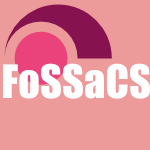 FoSSaCS-2005-FocardiRS #calculus #process #security
FoSSaCS-2005-FocardiRS #calculus #process #security- Bridging Language-Based and Process Calculi Security (RF, SR, AS), pp. 299–315.
 ICSM-2005-OBrienBE #empirical #theory and practice
ICSM-2005-OBrienBE #empirical #theory and practice- Empirically Studying Software Practitioners — Bridging the Gap between Theory and Practice (MPO, JB, CE), pp. 433–442.
 ICSM-2005-Sneed #maintenance #research
ICSM-2005-Sneed #maintenance #research- Bridging the Gap between Research and Business in Software Maintenance (HMS), pp. 3–6.
 CHI-2005-YeeP #learning #named #online #using
CHI-2005-YeeP #learning #named #online #using- StudioBRIDGE: using group, location, and event information to bridge online and offline encounters for co-located learning groups (SY, KSP), pp. 551–560.
 EDOC-2005-StefanovL #process
EDOC-2005-StefanovL #process- Bridging the Gap between Data Warehouses and Business Processes: A Business Intelligence Perspective for Event-Driven Process Chains (VS, BL), pp. 3–14.
 ICEIS-v4-2005-DavulcuNR #semantic gap
ICEIS-v4-2005-DavulcuNR #semantic gap- Boosting Item Findability: Bridging the Semantic Gap between Search Phrases and Item Information (HD, HVN, VR), pp. 48–55.
 SEKE-2005-FurstT #knowledge-based #named #ontology
SEKE-2005-FurstT #knowledge-based #named #ontology- TooCoM: bridge the gap between Ontologies and Knowledge-Based Systems (FF, FT), pp. 479–484.
 SAC-2005-DAgostiniF #aspect-oriented #metalanguage #preprocessor
SAC-2005-DAgostiniF #aspect-oriented #metalanguage #preprocessor- Bridging AOP to SMP: turning GCC into a metalanguage preprocessor (TSD, AAF), pp. 1563–1564.
 ITiCSE-WGR-2004-HazzanL #education #performance
ITiCSE-WGR-2004-HazzanL #education #performance- The practicum in computer science education: bridging gaps between theoretical knowledge and actual performance (OH, TL), pp. 47–51.
 ICSE-2004-KazmanBJ #human-computer #interactive #re-engineering
ICSE-2004-KazmanBJ #human-computer #interactive #re-engineering- Bridging the Gaps II: Bridging the Gaps between Software Engineering and Human-Computer Interaction (RK, LB, BEJ), pp. 773–774.
 HPCA-2004-PengPL #performance
HPCA-2004-PengPL #performance- Signature Buffer: Bridging Performance Gap between Registers and Caches (LP, JKP, KL), pp. 164–175.
 DATE-2003-PomeranzRK #detection #fault #on the
DATE-2003-PomeranzRK #detection #fault #on the- On the Characterization of Hard-to-Detect Bridging Faults (IP, SMR, SK), pp. 11012–11019.
 CHI-2003-EverittKLL #collaboration #design #distributed #physics
CHI-2003-EverittKLL #collaboration #design #distributed #physics- Two worlds apart: bridging the gap between physical and virtual media for distributed design collaboration (KE, SRK, RL, JAL), pp. 553–560.
 ICEIS-v2-2003-FerneleyBCR #process #social
ICEIS-v2-2003-FerneleyBCR #process #social- Bridging the Gap Between Social and Technical Processes to Facilitate IT Enabled Knowledge Dissemination (EF, BB, JAC, YR), pp. 74–82.
 SEKE-2003-TongrungrojanaL #modelling #web
SEKE-2003-TongrungrojanaL #modelling #web- WebML+: a Web modeling language for forming a bridge between business modeling and information modeling (RT, DBL), pp. 17–24.
 ICSE-2003-KazmanBB #human-computer #interactive #re-engineering
ICSE-2003-KazmanBB #human-computer #interactive #re-engineering- Bridging the Gaps Between Software Engineering and Human-Computer Interaction (RK, LJB, JB), pp. 777–778.
 CAV-2003-KestenPP #simulation
CAV-2003-KestenPP #simulation- Bridging the Gap between Fair Simulation and Trace Inclusion (YK, NP, AP), pp. 381–393.
 ASE-2002-TanL #design #object-oriented #requirements
ASE-2002-TanL #design #object-oriented #requirements- Systematic Bridging the Gap between Requirements and OO Design (HBKT, WL), pp. 249–252.
 PEPM-2002-MeurLC #partial evaluation #programming language #towards
PEPM-2002-MeurLC #partial evaluation #programming language #towards- Towards bridging the gap between programming languages and partial evaluation (AFLM, JLL, CC), pp. 9–18.
 CHI-2002-FioreTS #behaviour
CHI-2002-FioreTS #behaviour- Observed behavior and perceived value of authors in usenet newsgroups: bridging the gap (ATF, SLT, MAS), pp. 323–330.
 AdaEurope-2002-Ferscha #named #physics
AdaEurope-2002-Ferscha #named #physics- Contextware: Bridging Physical and Virtual Worlds (AF), pp. 51–64.
 GPCE-2002-ElradAB #aspect-oriented #design #implementation #modelling
GPCE-2002-ElradAB #aspect-oriented #design #implementation #modelling- Aspect-Oriented Modeling: Bridging the Gap between Implementation and Design (TE, OA, AB), pp. 189–201.
 SAC-2002-KangY #layout #multi
SAC-2002-KangY #layout #multi- Smoothed fetching: bridging the data layout and transmission schemes in multimedia servers (SK, HYY), pp. 755–760.
 ICSE-2002-PaceC #architecture #aspect-oriented #framework #object-oriented
ICSE-2002-PaceC #architecture #aspect-oriented #framework #object-oriented- An object-oriented bridge among architectural styles, aspects and frameworks (JADP, MRC), p. 717.
 DocEng-2001-VarlamisV #database #documentation #generative #relational #using #xml
DocEng-2001-VarlamisV #database #documentation #generative #relational #using #xml- Bridging XML-schema and relational databases: a system for generating and manipulating relational databases using valid XML documents (IV, MV), pp. 105–114.
 FME-2001-Mantel #data flow
FME-2001-Mantel #data flow- Information Flow Control and Applications — Bridging a Gap (HM), pp. 153–172.
 ICEIS-v2-2001-CostaAD #process
ICEIS-v2-2001-CostaAD #process- The Meeting Report Process: Bridging EMS with PDA (CJC, PA, FD), pp. 821–826.
 SEKE-2001-MedvidovicGEB #lifecycle #modelling
SEKE-2001-MedvidovicGEB #lifecycle #modelling- Software Model Connectors: Bridging Models across the Software Lifecycle (NM, PG, AE, BWB), pp. 387–396.
 TOOLS-USA-2001-White #component #database #relational
TOOLS-USA-2001-White #component #database #relational- Component/Object to Relational Database Bridging: A Leader’s Guide to Bridging the Chasm between Database and Software Engineers (JW), pp. 377–378.
 ICSE-2001-AmyotM #case study #design #requirements
ICSE-2001-AmyotM #case study #design #requirements- Bridging the Requirements/Design Gap in Dynamic Systems with Use Case Maps (UCMs) (DA, GM), pp. 743–744.
 DAC-2000-ZachariahCR #algorithm #novel
DAC-2000-ZachariahCR #algorithm #novel- A novel algorithm to extract two-node bridges (STZ, SC, CDR), pp. 790–793.
 ICSM-2000-RobitailleSK #comprehension #design #navigation #tool support
ICSM-2000-RobitailleSK #comprehension #design #navigation #tool support- Bridging Program Comprehension Tools by Design Navigation (SR, RS, RKK), pp. 22–32.
 ICSM-2000-SahraouiGM #automation #design #metric #object-oriented #quality #question
ICSM-2000-SahraouiGM #automation #design #metric #object-oriented #quality #question- Can Metrics Help to Bridge the Gap between the Improvement of OO Design Quality and its Automation? (HAS, RG, TM), pp. 154–162.
 CSCW-2000-Bernstein #how #process #tool support
CSCW-2000-Bernstein #how #process #tool support- How can cooperative work tools support dynamic group process? bridging the specificity frontier (AB), pp. 279–288.
 SIGIR-2000-BergerCCFM #statistics
SIGIR-2000-BergerCCFM #statistics- Bridging the lexical chasm: statistical approaches to answer-finding (ALB, RC, DC, DF, VOM), pp. 192–199.
 TOOLS-EUROPE-2000-SnoeckPD #architecture #modelling #object-oriented #process
TOOLS-EUROPE-2000-SnoeckPD #architecture #modelling #object-oriented #process- An Architecture for Bridging OO and Business Process Modeling (MS, SP, GD), p. 132–?.
 DATE-1999-WuGR #approach #fault #performance #reduction
DATE-1999-WuGR #approach #fault #performance #reduction- A Fault List Reduction Approach for Efficient Bridge Fault Diagnosis (JW, GSG, EMR), pp. 780–781.
 CSEET-1999-OliverEG
CSEET-1999-OliverEG- Bridging the Gap (DO, KE, MG), pp. 186–197.
 CHI-1999-MoherJOG #learning
CHI-1999-MoherJOG #learning- Bridging Strategies for VR-Based Learning (TGM, AEJ, SO, MG), pp. 536–543.
 CHI-1999-WantFGH #physics
CHI-1999-WantFGH #physics- Bridging Physical and Virtual Worlds with Electronic Tags (RW, KPF, AG, BLH), pp. 370–377.
 HCI-EI-1999-Fach #design pattern
HCI-EI-1999-Fach #design pattern- Design Patterns: Bridges Between Application Domain and Software Labs (PWF), pp. 909–912.
 UML-1999-BunseA #modelling
UML-1999-BunseA #modelling- The Normal Object Form: Bridging the Gap from Models to Code (CB, CA), pp. 691–705.
 TOOLS-PACIFIC-1999-Caspersen #c++ #embedded #framework #implementation #modelling #realtime
TOOLS-PACIFIC-1999-Caspersen #c++ #embedded #framework #implementation #modelling #realtime- A C++ Framework for Active Objects in Embedded Real-time Systems-Bridging the Gap Between Modeling and Implementation (MEC), pp. 52–65.
 RE-1999-HaumerJPH #approach #past present future
RE-1999-HaumerJPH #approach #past present future- Bridging the Gap Between Past and Future in RE: A Scenario-Based Approach (PH, MJ, KP, PH), pp. 66–73.
 VLDB-1998-RezendeS #database #middleware #research
VLDB-1998-RezendeS #database #middleware #research- Bridging Heterogeneity: Research and Practice of Database Middleware Technology (FdFR, GS), p. 699.
 CSEET-1998-BeddieBMT #industrial
CSEET-1998-BeddieBMT #industrial- Building the Bridge between Industry and Universities: The Graduates into SMEs Project (LB, EB, LM, JT), pp. 128–138.
 CSEET-1998-Hall #risk management
CSEET-1998-Hall #risk management- Training Risk Management: Bridge over Troubled Waters (EMH), pp. 36–39.
 ESOP-1998-RossS #alias #dependence #pointer
ESOP-1998-RossS #alias #dependence #pointer- Building a Bridge between Pointer Aliases and Program Dependences (JLR, SS), pp. 221–235.
 ICALP-1998-Pin
ICALP-1998-Pin- Bridges for Concatenation Hierarchies (JÉP), pp. 431–442.
 TOOLS-ASIA-1998-NguyenD #design #implementation #object-oriented
TOOLS-ASIA-1998-NguyenD #design #implementation #object-oriented- Bridging the Gap Between Object Oriented Design and Implementation (KN, TSD), p. 53–?.
 POPL-1998-JonesSLT #haskell #ml
POPL-1998-JonesSLT #haskell #ml- Bridging the Gulf: A Common Intermediate Language for ML and Haskell (SLPJ, MS, JL, APT), pp. 49–61.
 ICRE-1998-MayrK #concept #design #requirements
ICRE-1998-MayrK #concept #design #requirements- Conceptual Predesign — Bridging the Gap between Requirements and Conceptual Design (HCM, CK), p. 90–?.
 HPDC-1998-QuinnMS #matlab #named
HPDC-1998-QuinnMS #matlab #named- Otter: Bridging the Gap between MATLAB and ScaLAPACK (MJQ, AGM, NS), pp. 114–121.
 EDOC-1997-ThanhA #matter
EDOC-1997-ThanhA #matter- Mobility Support: A Mutil-Domain Bridging Matter (DVT, JAA), pp. 348–353.
 TOOLS-PACIFIC-1997-Schade #automation #c++ #generative #java
TOOLS-PACIFIC-1997-Schade #automation #c++ #generative #java- Automatic Generation of Bridging Code for Accessing C++ from Java (AS), pp. 165–180.
 CHI-1996-RansonPKRMCSS #agile #physics
CHI-1996-RansonPKRMCSS #agile #physics- Rapid Scout: Bridging the Gulf Between Physical and Virtual Environments (DSR, ESP, DLK, GAR, MLM, JMC, ES, CSS), pp. 442–449.
 ICPR-1996-BergerSPW #image #synthesis #video
ICPR-1996-BergerSPW #image #synthesis #video- Mixing synthesis and video images of outdoor environments: application to the bridges of Paris (MOB, GS, SP, BWD), pp. 90–94.
 ECOOP-1996-Hohenstein #c++ #database #relational
ECOOP-1996-Hohenstein #c++ #database #relational- Bridging the Gap Between C++ and Relational Databases (UH), pp. 398–420.
 FSE-1996-Petroski #concept
FSE-1996-Petroski #concept- Engineering Bridges: From Concept to Reality (Abstract) (HP), p. 1.
 CSEE-1995-MannsP #education #industrial #object-oriented
CSEE-1995-MannsP #education #industrial #object-oriented- Object-Oriented Technology Education and Training: Bridging the Gap Between Academia and Industry (MLM, GIP), p. 115.
 CHI-1995-LiebermanF #behaviour #programming
CHI-1995-LiebermanF #behaviour #programming- Bridging the Gulf Between Code and Behavior in Programming (HL, CF), pp. 480–486.
 SIGIR-1995-Winograd #library
SIGIR-1995-Winograd #library- Digital Libraries: Bridging the Two Cultures (TW), p. 2.
 FSE-1995-MurphyNS #modelling
FSE-1995-MurphyNS #modelling- Software Reflexion Models: Bridging the Gap Between Source and High-Level Models (GCM, DN, KJS), pp. 18–28.
 EDAC-1994-ChessL #fault #generative
EDAC-1994-ChessL #fault #generative- Generating Test Patterns for Bridge Faults in CMOS ICs (BC, TL), pp. 165–170.
 EDAC-1994-IsernF #fault
EDAC-1994-IsernF #fault- Test of Bridging Faults in Scan-based Sequential Circuits (EI, JF), pp. 366–370.
 EDAC-1994-Rodriguez-MontanesF #analysis #fault #testing
EDAC-1994-Rodriguez-MontanesF #analysis #fault #testing- Analysis of Bridging Defects in Sequential CMOS Circuits and their Current Testability (RRM, JF), pp. 356–360.
 EDAC-1994-RohfleischB #logic #optimisation
EDAC-1994-RohfleischB #logic #optimisation- Introduction of Permissible Bridges with Application to Logic Optimization after Technology Mapping (BR, FB), pp. 87–93.
 CSEE-1994-NavedaBCMS
CSEE-1994-NavedaBCMS- Bridging the Gaps (JFN, JB, JEC, EEM, FLVS), pp. 277–281.
 ICRE-1994-FairleyTB #concept #requirements #specification
ICRE-1994-FairleyTB #concept #requirements #specification- The concept of operations: the bridge from operational requirements to technical specifications (REF, RHT, PB), pp. 40–47.
 DAC-1993-ChakravartyG #algorithm #fault
DAC-1993-ChakravartyG #algorithm #fault- An Algorithm for Diagnosing Two-Line Bridging Faults in Combinational Circuits (SC, YG), pp. 520–524.
 DAC-1993-ChessL #fault #simulation
DAC-1993-ChessL #fault #simulation- Bridge Fault simulation strategies for CMOS integrated Circuits (BC, TL), pp. 458–462.
 SIGMOD-1993-KellerJA #database #object-oriented #persistent #programming #relational
SIGMOD-1993-KellerJA #database #object-oriented #persistent #programming #relational- Persistence Software: Bridging Object-Oriented Programming and Relational Databases (AMK, RJ, SA), pp. 523–528.
 INTERCHI-1993-JohnsonJKRC #user interface
INTERCHI-1993-JohnsonJKRC #user interface- Bridging the paper and electronic worlds: the paper user interface (WJ, HDJ, LK, RR, SKC), pp. 507–512.
 SEKE-1993-LoiaQ #logic programming #named #object-oriented
SEKE-1993-LoiaQ #logic programming #named #object-oriented- CLOS: A Key Issue To Bridge the Gap Between Object-Oriented and Logic Programming (VL, MQ), pp. 62–69.
 ICSE-1993-LichterSZ #industrial #prototype #theory and practice
ICSE-1993-LichterSZ #industrial #prototype #theory and practice- Prototyping in Industrial Software Projects — Bridging the Gap Between Theory and Practice (HL, MSH, HZ), pp. 221–229.
 DAC-1992-ChakravartyL #algorithm #fault #monitoring
DAC-1992-ChakravartyL #algorithm #fault #monitoring- Algorithms for Current Monitor Based Diagnosis of Bridging and Leakage Faults (SC, ML), pp. 353–356.
 DAC-1991-DuttK #library #synthesis
DAC-1991-DuttK #library #synthesis- Bridging High-Level Synthesis to RTL Technology Libraries (NDD, JRK), pp. 526–529.
 DAC-1988-TsengWRTB #behaviour #named #synthesis
DAC-1988-TsengWRTB #behaviour #named #synthesis- Bridge: A Versatile Behavioral Synthesis System (CJT, RSW, SGR, MMT, AKB), pp. 415–420.
 DAC-1987-RajsumanMJ #fault #modelling #on the
DAC-1987-RajsumanMJ #fault #modelling #on the- On Accuracy of Switch-Level Modeling of Bridging Faults in Complex Gates (RR, YKM, APJ), pp. 244–250.
 SIGIR-1984-Cooper
SIGIR-1984-Cooper- Bridging the Gap Between AI and RI (WSC), pp. 259–265.
 DAC-1983-Acken #fault #testing
DAC-1983-Acken #fault #testing- Testing for bridging faults (shorts) in CMOS circuits (JMA), pp. 717–718.
 SIGIR-1983-Wessel #information management
SIGIR-1983-Wessel #information management- Progress Report on Project Information Bridge (AEW), pp. 49–74.
 DAC-1980-Fitch
DAC-1980-Fitch- Will your bridge stand the load? (Position Paper) (AEF), p. 518.
 DAC-1980-KarpovskyS #component #detection #fault #standard
DAC-1980-KarpovskyS #component #detection #fault #standard- Detecting bridging and stuck-at faults at input and output pins of standard digital components (MGK, SYHS), pp. 494–505.
 DATE-2015-MunchPHH #embedded #manycore #named #realtime #scalability #using
DATE-2015-MunchPHH #embedded #manycore #named #realtime #scalability #using LATA-2015-LeonM #partial order #set
LATA-2015-LeonM #partial order #set CHI-2015-0001GH #challenge #design #framework #human-computer
CHI-2015-0001GH #challenge #design #framework #human-computer CHI-2015-HarboeH
CHI-2015-HarboeH CHI-2015-MejovaBW #personalisation
CHI-2015-MejovaBW #personalisation CHI-2015-MudliarR #gender #online
CHI-2015-MudliarR #gender #online CSCW-2015-Anya #design #exclamation #question #what
CSCW-2015-Anya #design #exclamation #question #what CSCW-2015-MoghaddamNB #design #distributed #named
CSCW-2015-MoghaddamNB #design #distributed #named HCI-UC-2015-GandyBLLMCS #concept
HCI-UC-2015-GandyBLLMCS #concept ICEIS-v2-2015-CruzMS15a #modelling #process #set
ICEIS-v2-2015-CruzMS15a #modelling #process #set ICML-2015-SalimansKW #markov #monte carlo
ICML-2015-SalimansKW #markov #monte carlo KDD-2015-RayanaA #bibliography #detection #metadata #network
KDD-2015-RayanaA #bibliography #detection #metadata #network SIGIR-2015-WangLWZZ #learning #named
SIGIR-2015-WangLWZZ #learning #named SPLC-2015-FerrariSGD #diagrams #documentation #feature model #natural language #tool support
SPLC-2015-FerrariSGD #diagrams #documentation #feature model #natural language #tool support CADE-2015-ChocronFR #revisited
CADE-2015-ChocronFR #revisited DATE-2014-HeinigDHMWHGBKR #integration
DATE-2014-HeinigDHMWHGBKR #integration VLDB-2014-ArenasDFKS #approach #graph
VLDB-2014-ArenasDFKS #approach #graph CHI-2014-DalsgardD #concept #human-computer #research #theory and practice
CHI-2014-DalsgardD #concept #human-computer #research #theory and practice CSCW-2014-BodenRSW #coordination
CSCW-2014-BodenRSW #coordination DUXU-TMT-2014-Elias #game studies
DUXU-TMT-2014-Elias #game studies DUXU-TMT-2014-SchmidtKGSGW #education
DUXU-TMT-2014-SchmidtKGSGW #education DUXU-TMT-2014-ZellerGD #design
DUXU-TMT-2014-ZellerGD #design SCSM-2014-BeckmannG #social
SCSM-2014-BeckmannG #social ICPR-2014-HafnerLUW #classification
ICPR-2014-HafnerLUW #classification KEOD-2014-Lesot
KEOD-2014-Lesot KMIS-2014-Muthaiyah #implementation #information management #theory and practice
KMIS-2014-Muthaiyah #implementation #information management #theory and practice SIGIR-2014-CeroniTKN #using
SIGIR-2014-CeroniTKN #using SIGIR-2014-VulicZM #e-commerce #formal method #learning
SIGIR-2014-VulicZM #e-commerce #formal method #learning ECOOP-2014-ScherrC #staging
ECOOP-2014-ScherrC #staging POPL-2014-ChaudhuriCS #proving #synthesis #using
POPL-2014-ChaudhuriCS #proving #synthesis #using SLE-J-2012-GuizzardiZ #concept #modelling #ontology #using
SLE-J-2012-GuizzardiZ #concept #modelling #ontology #using CASE-2013-ChoJKMKC
CASE-2013-ChoJKMKC CASE-2013-LaLBGYMRP #evaluation
CASE-2013-LaLBGYMRP #evaluation CASE-2013-LiuTYG #modelling
CASE-2013-LiuTYG #modelling CASE-2013-SehestedtPRL #3d #maintenance #performance
CASE-2013-SehestedtPRL #3d #maintenance #performance DATE-2013-GoultiaevaSB
DATE-2013-GoultiaevaSB SIGMOD-2013-ZhuMXLTZ #distance #network #query #theory and practice #towards
SIGMOD-2013-ZhuMXLTZ #distance #network #query #theory and practice #towards CSEET-2013-NgH #education #framework #industrial #named #re-engineering
CSEET-2013-NgH #education #framework #industrial #named #re-engineering CHI-2013-CoughlanPM #collaboration #education #reuse
CHI-2013-CoughlanPM #collaboration #education #reuse CHI-2013-PriorWBK #agile #development
CHI-2013-PriorWBK #agile #development CHI-2013-VermeulenLHC #execution
CHI-2013-VermeulenLHC #execution DUXU-CXC-2013-ThianthaiZ #enterprise #gamification
DUXU-CXC-2013-ThianthaiZ #enterprise #gamification ICEIS-J-2013-GandonBCCFGTMSTV #challenge #semantics #social #web
ICEIS-J-2013-GandonBCCFGTMSTV #challenge #semantics #social #web ICEIS-v1-2013-PiazzaR #implementation #modelling #multi #problem
ICEIS-v1-2013-PiazzaR #implementation #modelling #multi #problem MLDM-2013-ZhaiHOHH #concept
MLDM-2013-ZhaiHOHH #concept ICSE-2013-ZhangH0RM #testing
ICSE-2013-ZhangH0RM #testing SPLC-2013-DumitrescuMSD #experience #modelling #product line #variability
SPLC-2013-DumitrescuMSD #experience #modelling #product line #variability HPCA-2013-NereHLT #behaviour #biology #semantic gap
HPCA-2013-NereHLT #behaviour #biology #semantic gap CASE-2012-KimCJLKC #development #maintenance
CASE-2012-KimCJLKC #development #maintenance CSMR-2012-Varro #maintenance #model transformation
CSMR-2012-Varro #maintenance #model transformation ICGT-2012-GolasLEG #flexibility #formal method #graph grammar #towards
ICGT-2012-GolasLEG #flexibility #formal method #graph grammar #towards CHI-2012-BaoHCQHG #named #wiki
CHI-2012-BaoHCQHG #named #wiki CHI-2012-VoidaHA #coordination #social #volunteer
CHI-2012-VoidaHA #coordination #social #volunteer CSCW-2012-EletaG #case study #image #multi #social
CSCW-2012-EletaG #case study #image #multi #social CIKM-2012-Gomez-RodriguezR #graph #online #social
CIKM-2012-Gomez-RodriguezR #graph #online #social SEKE-2012-DeltombeGB #legacy #modelling
SEKE-2012-DeltombeGB #legacy #modelling ECMFA-2012-YueA #case study #industrial #non-functional #requirements #state machine #testing
ECMFA-2012-YueA #case study #industrial #non-functional #requirements #state machine #testing SAC-2012-ZhaoLCSS #information management #modelling #process #question
SAC-2012-ZhaoLCSS #information management #modelling #process #question ICSE-2012-Shang #developer #using
ICSE-2012-Shang #developer #using SLE-2012-CombemaleHJBB #execution #metamodelling #modelling
SLE-2012-CombemaleHJBB #execution #metamodelling #modelling SLE-2012-GuizzardiZ #concept #modelling
SLE-2012-GuizzardiZ #concept #modelling HPDC-2012-XiaCLTDB #named #network #performance
HPDC-2012-XiaCLTDB #named #network #performance TAP-2012-ArmandoPCMB #automation #model checking #protocol #security #testing
TAP-2012-ArmandoPCMB #automation #model checking #protocol #security #testing DATE-2011-NejadMG #quality
DATE-2011-NejadMG #quality HT-2011-DaiQD #query #web
HT-2011-DaiQD #query #web VLDB-2011-GrosseLWFL #in memory
VLDB-2011-GrosseLWFL #in memory CHI-2011-HartmannDC #named #web
CHI-2011-HartmannDC #named #web CHI-2011-RaderEC
CHI-2011-RaderEC HCD-2011-LinC #research #social #social media
HCD-2011-LinC #research #social #social media OCSC-2011-TsaiHT #network #social
OCSC-2011-TsaiHT #network #social AdaEurope-2011-Rodriguez-LopezG #abstraction #architecture #middleware #paradigm
AdaEurope-2011-Rodriguez-LopezG #abstraction #architecture #middleware #paradigm CAiSE-2011-MoosaviLLP #collaboration #named
CAiSE-2011-MoosaviLLP #collaboration #named ICEIS-J-2011-MeisenMSJ11a #adaptation #integration #semantic gap #simulation
ICEIS-J-2011-MeisenMSJ11a #adaptation #integration #semantic gap #simulation CIKM-2011-MomtaziK #retrieval
CIKM-2011-MomtaziK #retrieval KMIS-2011-MendesR11a #development #ontology #semantics
KMIS-2011-MendesR11a #development #ontology #semantics MLDM-2011-SahaDR #community #detection #network
MLDM-2011-SahaDR #community #detection #network MoDELS-2011-ClavreulMBF #architecture #behaviour #modelling
MoDELS-2011-ClavreulMBF #architecture #behaviour #modelling MoDELS-2011-FlochYGDCRF #compilation #modelling #optimisation #question
MoDELS-2011-FlochYGDCRF #compilation #modelling #optimisation #question MoDELS-2011-ClavreulMBF #architecture #behaviour #modelling
MoDELS-2011-ClavreulMBF #architecture #behaviour #modelling MoDELS-2011-FlochYGDCRF #compilation #modelling #optimisation #question
MoDELS-2011-FlochYGDCRF #compilation #modelling #optimisation #question SAC-2011-EbraertSJ #design #diagrams #feature model #implementation
SAC-2011-EbraertSJ #design #diagrams #feature model #implementation SAC-2011-SchallSPD #community
SAC-2011-SchallSPD #community SPLC-2011-DhunganaSBRGBG #modelling #multi #product line #variability
SPLC-2011-DhunganaSBRGBG #modelling #multi #product line #variability CBSE-2010-SuryadevaraKSP #embedded #modelling #semantic gap
CBSE-2010-SuryadevaraKSP #embedded #modelling #semantic gap DAC-2010-NahirZGHACBFBK #validation #verification
DAC-2010-NahirZGHACBFBK #validation #verification DocEng-2010-QuintRSV #editing
DocEng-2010-QuintRSV #editing PEPM-2010-MossP #implementation #performance
PEPM-2010-MossP #implementation #performance ICPR-2010-SunVFT #automation #detection
ICPR-2010-SunVFT #automation #detection ECMFA-2010-BruneliereCCJB #eclipse #modelling #tool support #towards
ECMFA-2010-BruneliereCCJB #eclipse #modelling #tool support #towards RE-2010-LockerbieBMBE #analysis #concept #modelling #simulation #using
RE-2010-LockerbieBMBE #analysis #concept #modelling #simulation #using ICSE-2010-BudnikCK #automation #testing #theory and practice
ICSE-2010-BudnikCK #automation #testing #theory and practice ICSE-2010-ErfurthR #aspect-oriented #named #requirements #uml
ICSE-2010-ErfurthR #aspect-oriented #named #requirements #uml ICSE-2010-TreudeS10a #category theory #lightweight
ICSE-2010-TreudeS10a #category theory #lightweight DATE-2009-GraciaMVBV #latency
DATE-2009-GraciaMVBV #latency DATE-2009-KhursheedAH #design #fault #multi #reduction
DATE-2009-KhursheedAH #design #fault #multi #reduction DATE-2009-XuVJ #runtime
DATE-2009-XuVJ #runtime HT-2009-CarmagnolaLB #facebook #network #similarity #social
HT-2009-CarmagnolaLB #facebook #network #similarity #social SIGMOD-2009-ChaudhuriNS #profiling #static analysis #using
SIGMOD-2009-ChaudhuriNS #profiling #static analysis #using VLDB-2009-ArenasPRR #theory and practice
VLDB-2009-ArenasPRR #theory and practice ITiCSE-2009-BrindaPS #education #standard
ITiCSE-2009-BrindaPS #education #standard TACAS-2009-Miller #development #model checking #modelling
TACAS-2009-Miller #development #model checking #modelling CHI-2009-WeissWJJKHB #physics
CHI-2009-WeissWJJKHB #physics DHM-2009-BruggemannS #design
DHM-2009-BruggemannS #design DHM-2009-RobbinsCM #architecture #human-computer #modelling
DHM-2009-RobbinsCM #architecture #human-computer #modelling HCD-2009-MerlinHR #concept #evolution #multi
HCD-2009-MerlinHR #concept #evolution #multi SIGAda-2009-LiangRS #architecture #automation #generative #prototype
SIGAda-2009-LiangRS #architecture #automation #generative #prototype CIKM-2009-WangZZ09a #information management #network
CIKM-2009-WangZZ09a #information management #network SEKE-2009-BifflSM #automation #ontology #semantic gap
SEKE-2009-BifflSM #automation #ontology #semantic gap GPCE-2009-Nikhil #design #hardware #using
GPCE-2009-Nikhil #design #hardware #using RE-2009-HeiskariKRM #requirements #usability
RE-2009-HeiskariKRM #requirements #usability ICSE-2009-TreudeS #aspect-oriented #development #how #social
ICSE-2009-TreudeS #aspect-oriented #development #how #social HPCA-2009-FanKDM #programmable
HPCA-2009-FanKDM #programmable CADE-2009-Sofronie-Stokkermans #locality
CADE-2009-Sofronie-Stokkermans #locality ASE-2008-RuengmeeFBRL #aspect-oriented #editing #programming #usability
ASE-2008-RuengmeeFBRL #aspect-oriented #editing #programming #usability CASE-2008-WangSF #automation #detection #difference #equation
CASE-2008-WangSF #automation #detection #difference #equation DATE-2008-DAscoliBMFRPVFM #programmable
DATE-2008-DAscoliBMFRPVFM #programmable DATE-2008-EngelkePSB #fault #industrial #simulation
DATE-2008-EngelkePSB #fault #industrial #simulation DATE-2008-PomeranzR #detection #fault #logic
DATE-2008-PomeranzR #detection #fault #logic DATE-2008-TenentesKK #testing
DATE-2008-TenentesKK #testing SEFM-2008-LaneseGMZ
SEFM-2008-LaneseGMZ ICEIS-ISAS2-2008-Kumlander #development #nondeterminism
ICEIS-ISAS2-2008-Kumlander #development #nondeterminism KDD-2008-HwangKRZ #graph #mining
KDD-2008-HwangKRZ #graph #mining SEKE-2008-ScheithauerWT #documentation #execution #process #semantic gap
SEKE-2008-ScheithauerWT #documentation #execution #process #semantic gap SEKE-2008-Wotawa #modelling #slicing
SEKE-2008-Wotawa #modelling #slicing SIGIR-2008-HoonKTK #named #query
SIGIR-2008-HoonKTK #named #query SIGIR-2008-XueDYY #classification #topic
SIGIR-2008-XueDYY #classification #topic ICMT-2008-AmstelBPV #algebra #modelling #process #question #semantic gap #state machine #uml
ICMT-2008-AmstelBPV #algebra #modelling #process #question #semantic gap #state machine #uml SLE-2008-Nilsson-NymanEH #semiparsing #using
SLE-2008-Nilsson-NymanEH #semiparsing #using HPCA-2008-LinLDZZS #clustering #manycore #simulation
HPCA-2008-LinLDZZS #clustering #manycore #simulation VMCAI-2008-Goldberg #on the #simulation #verification
VMCAI-2008-Goldberg #on the #simulation #verification SIGMOD-2007-MelnikAB #compilation #database
SIGMOD-2007-MelnikAB #compilation #database VLDB-2007-ChaudhuriNS #database #developer #profiling
VLDB-2007-ChaudhuriNS #database #developer #profiling DHM-2007-Feyen #interactive #modelling
DHM-2007-Feyen #interactive #modelling HCI-IDU-2007-ChenA #comprehension #design
HCI-IDU-2007-ChenA #comprehension #design SIGIR-2007-LalmasBFFJ #community #comprehension #information management
SIGIR-2007-LalmasBFFJ #community #comprehension #information management DAC-2006-GoraiBBTM #protocol #verification
DAC-2006-GoraiBBTM #protocol #verification DATE-2006-PomeranzR #detection #fault #generative #testing
DATE-2006-PomeranzR #detection #fault #generative #testing SIGMOD-2006-Cohen #theory and practice
SIGMOD-2006-Cohen #theory and practice VLDB-2006-ChenLSDC #database #image #named #query #scalability #semantic gap
VLDB-2006-ChenLSDC #database #image #named #query #scalability #semantic gap CHI-2006-DrennerHFRT #web
CHI-2006-DrennerHFRT #web EDOC-2006-ShafiqDF #multi #semantics #towards #web #web service
EDOC-2006-ShafiqDF #multi #semantics #towards #web #web service EDOC-2006-ZahaDHBD #interactive #modelling
EDOC-2006-ZahaDHBD #interactive #modelling ICEIS-ISAS-2006-ShishkovDL
ICEIS-ISAS-2006-ShishkovDL KDD-2006-ZhangCWZ #clustering #concept #identification
KDD-2006-ZhangCWZ #clustering #concept #identification SIGIR-2006-ShenSYC #classification #query #web
SIGIR-2006-ShenSYC #classification #query #web ICSE-2006-ThompsonE #education #industrial #re-engineering
ICSE-2006-ThompsonE #education #industrial #re-engineering CGO-2006-ChenGSUWZLZ #execution #framework #java
CGO-2006-ChenGSUWZLZ #execution #framework #java WICSA-2005-Riva #architecture #logic #re-engineering
WICSA-2005-Riva #architecture #logic #re-engineering DAC-2005-BacchiniMDMPSEU #named
DAC-2005-BacchiniMDMPSEU #named DATE-2005-KallakuriDF #communication
DATE-2005-KallakuriDF #communication VLDB-2005-DittrichKK #sql
VLDB-2005-DittrichKK #sql ITiCSE-2005-TurbanRT
ITiCSE-2005-TurbanRT FoSSaCS-2005-FocardiRS #calculus #process #security
FoSSaCS-2005-FocardiRS #calculus #process #security ICSM-2005-OBrienBE #empirical #theory and practice
ICSM-2005-OBrienBE #empirical #theory and practice ICSM-2005-Sneed #maintenance #research
ICSM-2005-Sneed #maintenance #research CHI-2005-YeeP #learning #named #online #using
CHI-2005-YeeP #learning #named #online #using EDOC-2005-StefanovL #process
EDOC-2005-StefanovL #process ICEIS-v4-2005-DavulcuNR #semantic gap
ICEIS-v4-2005-DavulcuNR #semantic gap SEKE-2005-FurstT #knowledge-based #named #ontology
SEKE-2005-FurstT #knowledge-based #named #ontology SAC-2005-DAgostiniF #aspect-oriented #metalanguage #preprocessor
SAC-2005-DAgostiniF #aspect-oriented #metalanguage #preprocessor ITiCSE-WGR-2004-HazzanL #education #performance
ITiCSE-WGR-2004-HazzanL #education #performance ICSE-2004-KazmanBJ #human-computer #interactive #re-engineering
ICSE-2004-KazmanBJ #human-computer #interactive #re-engineering HPCA-2004-PengPL #performance
HPCA-2004-PengPL #performance DATE-2003-PomeranzRK #detection #fault #on the
DATE-2003-PomeranzRK #detection #fault #on the CHI-2003-EverittKLL #collaboration #design #distributed #physics
CHI-2003-EverittKLL #collaboration #design #distributed #physics ICEIS-v2-2003-FerneleyBCR #process #social
ICEIS-v2-2003-FerneleyBCR #process #social SEKE-2003-TongrungrojanaL #modelling #web
SEKE-2003-TongrungrojanaL #modelling #web ICSE-2003-KazmanBB #human-computer #interactive #re-engineering
ICSE-2003-KazmanBB #human-computer #interactive #re-engineering CAV-2003-KestenPP #simulation
CAV-2003-KestenPP #simulation ASE-2002-TanL #design #object-oriented #requirements
ASE-2002-TanL #design #object-oriented #requirements PEPM-2002-MeurLC #partial evaluation #programming language #towards
PEPM-2002-MeurLC #partial evaluation #programming language #towards CHI-2002-FioreTS #behaviour
CHI-2002-FioreTS #behaviour AdaEurope-2002-Ferscha #named #physics
AdaEurope-2002-Ferscha #named #physics GPCE-2002-ElradAB #aspect-oriented #design #implementation #modelling
GPCE-2002-ElradAB #aspect-oriented #design #implementation #modelling SAC-2002-KangY #layout #multi
SAC-2002-KangY #layout #multi ICSE-2002-PaceC #architecture #aspect-oriented #framework #object-oriented
ICSE-2002-PaceC #architecture #aspect-oriented #framework #object-oriented DocEng-2001-VarlamisV #database #documentation #generative #relational #using #xml
DocEng-2001-VarlamisV #database #documentation #generative #relational #using #xml FME-2001-Mantel #data flow
FME-2001-Mantel #data flow ICEIS-v2-2001-CostaAD #process
ICEIS-v2-2001-CostaAD #process SEKE-2001-MedvidovicGEB #lifecycle #modelling
SEKE-2001-MedvidovicGEB #lifecycle #modelling TOOLS-USA-2001-White #component #database #relational
TOOLS-USA-2001-White #component #database #relational ICSE-2001-AmyotM #case study #design #requirements
ICSE-2001-AmyotM #case study #design #requirements DAC-2000-ZachariahCR #algorithm #novel
DAC-2000-ZachariahCR #algorithm #novel ICSM-2000-RobitailleSK #comprehension #design #navigation #tool support
ICSM-2000-RobitailleSK #comprehension #design #navigation #tool support ICSM-2000-SahraouiGM #automation #design #metric #object-oriented #quality #question
ICSM-2000-SahraouiGM #automation #design #metric #object-oriented #quality #question CSCW-2000-Bernstein #how #process #tool support
CSCW-2000-Bernstein #how #process #tool support SIGIR-2000-BergerCCFM #statistics
SIGIR-2000-BergerCCFM #statistics TOOLS-EUROPE-2000-SnoeckPD #architecture #modelling #object-oriented #process
TOOLS-EUROPE-2000-SnoeckPD #architecture #modelling #object-oriented #process DATE-1999-WuGR #approach #fault #performance #reduction
DATE-1999-WuGR #approach #fault #performance #reduction CSEET-1999-OliverEG
CSEET-1999-OliverEG CHI-1999-MoherJOG #learning
CHI-1999-MoherJOG #learning CHI-1999-WantFGH #physics
CHI-1999-WantFGH #physics HCI-EI-1999-Fach #design pattern
HCI-EI-1999-Fach #design pattern UML-1999-BunseA #modelling
UML-1999-BunseA #modelling TOOLS-PACIFIC-1999-Caspersen #c++ #embedded #framework #implementation #modelling #realtime
TOOLS-PACIFIC-1999-Caspersen #c++ #embedded #framework #implementation #modelling #realtime RE-1999-HaumerJPH #approach #past present future
RE-1999-HaumerJPH #approach #past present future VLDB-1998-RezendeS #database #middleware #research
VLDB-1998-RezendeS #database #middleware #research CSEET-1998-BeddieBMT #industrial
CSEET-1998-BeddieBMT #industrial CSEET-1998-Hall #risk management
CSEET-1998-Hall #risk management ESOP-1998-RossS #alias #dependence #pointer
ESOP-1998-RossS #alias #dependence #pointer ICALP-1998-Pin
ICALP-1998-Pin TOOLS-ASIA-1998-NguyenD #design #implementation #object-oriented
TOOLS-ASIA-1998-NguyenD #design #implementation #object-oriented POPL-1998-JonesSLT #haskell #ml
POPL-1998-JonesSLT #haskell #ml ICRE-1998-MayrK #concept #design #requirements
ICRE-1998-MayrK #concept #design #requirements HPDC-1998-QuinnMS #matlab #named
HPDC-1998-QuinnMS #matlab #named EDOC-1997-ThanhA #matter
EDOC-1997-ThanhA #matter TOOLS-PACIFIC-1997-Schade #automation #c++ #generative #java
TOOLS-PACIFIC-1997-Schade #automation #c++ #generative #java CHI-1996-RansonPKRMCSS #agile #physics
CHI-1996-RansonPKRMCSS #agile #physics ICPR-1996-BergerSPW #image #synthesis #video
ICPR-1996-BergerSPW #image #synthesis #video ECOOP-1996-Hohenstein #c++ #database #relational
ECOOP-1996-Hohenstein #c++ #database #relational FSE-1996-Petroski #concept
FSE-1996-Petroski #concept CSEE-1995-MannsP #education #industrial #object-oriented
CSEE-1995-MannsP #education #industrial #object-oriented CHI-1995-LiebermanF #behaviour #programming
CHI-1995-LiebermanF #behaviour #programming SIGIR-1995-Winograd #library
SIGIR-1995-Winograd #library FSE-1995-MurphyNS #modelling
FSE-1995-MurphyNS #modelling EDAC-1994-ChessL #fault #generative
EDAC-1994-ChessL #fault #generative EDAC-1994-IsernF #fault
EDAC-1994-IsernF #fault EDAC-1994-Rodriguez-MontanesF #analysis #fault #testing
EDAC-1994-Rodriguez-MontanesF #analysis #fault #testing EDAC-1994-RohfleischB #logic #optimisation
EDAC-1994-RohfleischB #logic #optimisation CSEE-1994-NavedaBCMS
CSEE-1994-NavedaBCMS ICRE-1994-FairleyTB #concept #requirements #specification
ICRE-1994-FairleyTB #concept #requirements #specification DAC-1993-ChakravartyG #algorithm #fault
DAC-1993-ChakravartyG #algorithm #fault DAC-1993-ChessL #fault #simulation
DAC-1993-ChessL #fault #simulation SIGMOD-1993-KellerJA #database #object-oriented #persistent #programming #relational
SIGMOD-1993-KellerJA #database #object-oriented #persistent #programming #relational INTERCHI-1993-JohnsonJKRC #user interface
INTERCHI-1993-JohnsonJKRC #user interface SEKE-1993-LoiaQ #logic programming #named #object-oriented
SEKE-1993-LoiaQ #logic programming #named #object-oriented ICSE-1993-LichterSZ #industrial #prototype #theory and practice
ICSE-1993-LichterSZ #industrial #prototype #theory and practice DAC-1992-ChakravartyL #algorithm #fault #monitoring
DAC-1992-ChakravartyL #algorithm #fault #monitoring DAC-1991-DuttK #library #synthesis
DAC-1991-DuttK #library #synthesis DAC-1988-TsengWRTB #behaviour #named #synthesis
DAC-1988-TsengWRTB #behaviour #named #synthesis DAC-1987-RajsumanMJ #fault #modelling #on the
DAC-1987-RajsumanMJ #fault #modelling #on the SIGIR-1984-Cooper
SIGIR-1984-Cooper DAC-1983-Acken #fault #testing
DAC-1983-Acken #fault #testing SIGIR-1983-Wessel #information management
SIGIR-1983-Wessel #information management DAC-1980-Fitch
DAC-1980-Fitch DAC-1980-KarpovskyS #component #detection #fault #standard
DAC-1980-KarpovskyS #component #detection #fault #standard









